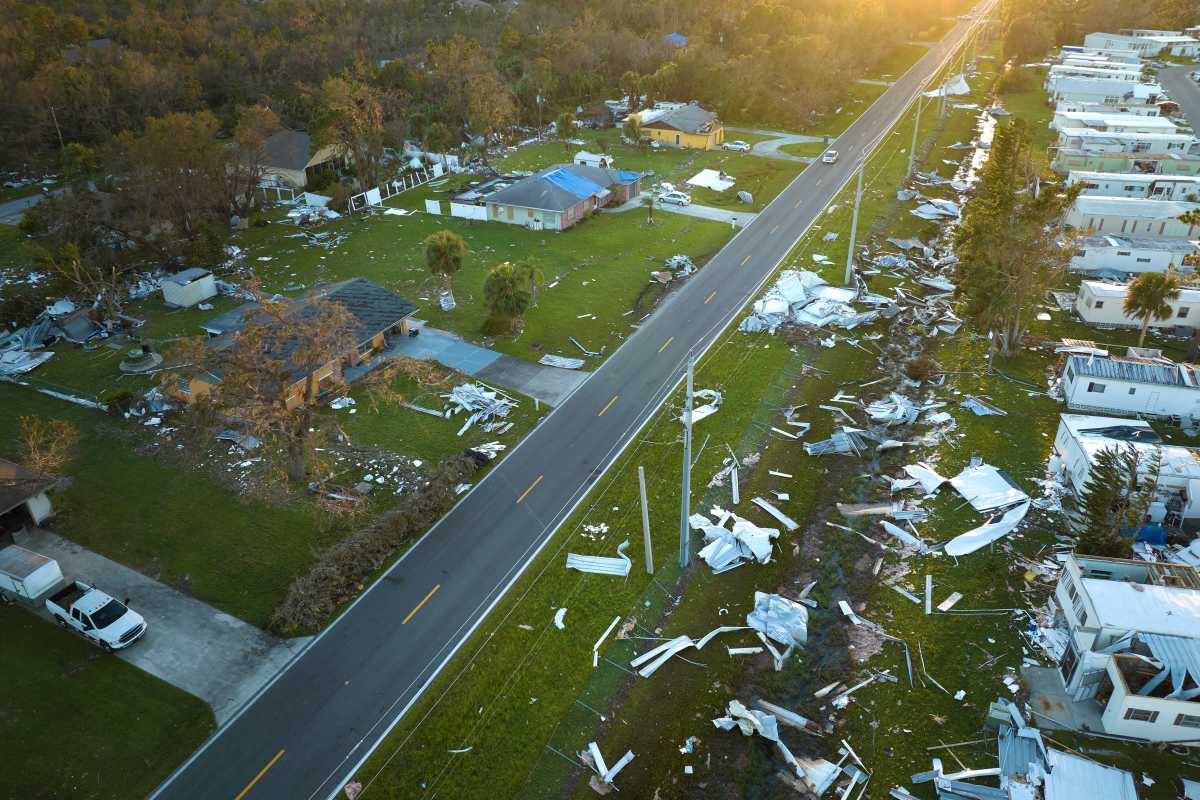
Hurricane-proofing your Panama City landscape is a matter of choosing your trees and plants carefully, using soft mulch, cleaning your yard, bringing fragile items indoors, turning off irrigation, installing a hurricane-resistant fence, and taking steps to prevent water damage.
When designing your landscape, create a plan that includes native plants that are adapted to the climate and local weather conditions and then plant them strategically. Planning ahead is crucial for mitigating damage and the costs that accompany them.
In this article, we’ll learn the steps to hurricane-proofing your Panama City landscape.
Plan Your Landscaping Carefully
Panama City is directly hit by a hurricane pretty frequently — on average every 2.34 years. So it’s not a matter of IF one will hit us, but WHEN.
No plan can prevent some damage from occurring when a devastating storm comes through, but the right plan can mitigate a good bit of damage to your landscape.
Hurricane-proof landscaping should include:
- Hurricane-resistant trees and hedges
- Hurricane resistant fencing
- Use hurricane-friendly mulch
- Choose outdoor decorations and furniture that you can secure or bring inside.
- Regularly water, mow, and fertilize your lawn, trees, and plants
Because everyone’s aesthetic preferences vary, you may have more items to add to your list. When creating your landscape, select plants and accessories that can endure harsh winds or that you can bring into the house.
Just before a hurricane, you need to:
- Clean up your yard, including drains and gutters.
- Secure or bring inside anything that can become a projectile
- Trim, thin, and stake your trees
- Turn off your irrigation system
As with landscape planning, there may be additional tasks you’ll need to add to this list. When preparing for a hurricane, the most important consideration is reducing the risk of projectiles.
Carefully Choose Your Trees
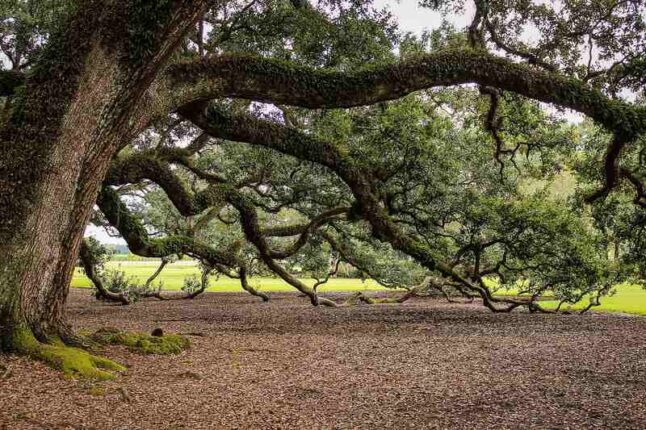
Trees are one of the biggest worries when a hurricane is coming. Take plenty of precautions to ensure that your lovely, shade-giving trees don’t become your worst nightmare.
When Planning your Landscape
- Choose wind-resistant species of trees
- Group trees together. They give each other additional protection from the wind and elements.
- Don’t plant trees too close to your home, power lines, and other outdoor structures. Planting trees too close to your home can have disastrous results.
- Install hurricane-resistant hedges or shrubs to strengthen the root system and provide additional protection.
- Leave room for roots to grow. While grouping trees and adding hedges is highly recommended, they shouldn’t be right on top of one another. Leave enough room for the root system to grow deep, healthy, and strong.
- Maintain trees. Fertilize, trim, and water your trees as needed. The healthier your tree, the better it can stand up against wind.
When Preparing for a Hurricane
- Trim your trees and keep your eye out for signs your trees needs pruning.
- Remove dead branches and debris. In the case of palm trees, remove brown palms and coconuts.
- Crown-thin dense foliage trees. This involves thinning the tree leaves to prevent them from acting as a sail, which could rip your tree out of the ground.
- Secure smaller ornamental trees by staking them.
Hurricane Resistant Trees
Trees with dense, flexible wood withstand hurricane-force winds better than lighter, rigid wood.
Hurricane-resistant trees perfect for a Panama City landscape include:
- Sand live oak
- American holly
- Wax myrtle
- Southern magnolia
- Sweetgum
- Crape myrtle
- Live oak
- Bald cypress
- Gumbo limbo
If you want to choose a palm tree, use:
- Sabal palm (also known as Sabal palmetto) – Florida’s state tree
- Canary Island date palm
- Manila palm
Trees to Avoid
When looking through your options, these trees do not withstand heavy wind very well and should be avoided:
- Sand pine
- Pecan
- Laurel oak
- Water oak
- Queen palm
- Australian pine
- Melaleuca
- Weeping banyan
Pick Plants that Withstand Wind and Heavy Rain
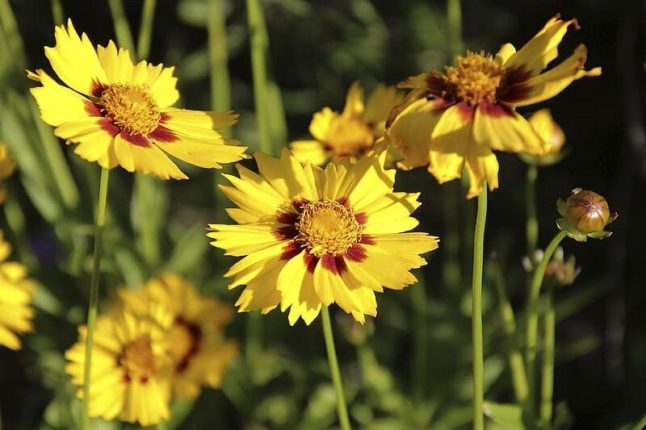
Unless you want your landscape ruined, choose plants and shrubs that can withstand hurricane-force wind and rain as well as everyday life in hot and sunny Panama City.
When Planning your Landscape
- Choose plants and shrubs that are salt-tolerant and Florida natives. Along with other benefits of using native plants, they’re used to the ocean spray and whipping wind.
- Choose plants that play well with others and plant them in groups. Grouping plants will help them shield each other from harsh winds.
- Plant delicate flowers in pots so you can bring them inside when harsh weather comes.
- Plant hedges or install a retaining wall around your garden. It will help shield plants from the wind.
- Maintain plants. Trim, prune, water, and fertilize regularly so your plants grow strong healthy roots.
When Preparing for a Hurricane
- Clear debris and remove dead leaves and flowers.
- Tie climbing plants to support stakes.
- Bring potted plants into your house.
- Cover your plants with a mesh tarp. Don’t use a plastic tarp, though, as it can easily become a sail and cause damage.
- Harvest ripe or nearly ripe flowers, fruits, or vegetables.
Hurricane-resistant flowers
Choose flowers that are salt-tolerant and native to Florida.
- Beach sunflower
- Columbine
- Elliott’s aster
- Milkweed
- Passion Flower
- Railroad Vine
- Scarlet Sage
- Tickseed
- Violets
Hurricane-resistant hedges and shrubs
Like flowers, choose salt-tolerant and native hedges and shrubs. They’ll make your landscaping more hurricane-resistant.
- Azaleas
- Bahama cassia
- Firebush
- Jamaica caper
- Marlberry
- Oakleaf hydrangea
- Southern wax myrtle
- Walter’s viburnum
- Wild coffee
- Yucca
For more tips and tricks, check out 11 Hurricane Resistant Landscaping Ideas for Florida.
Mulch Wisely
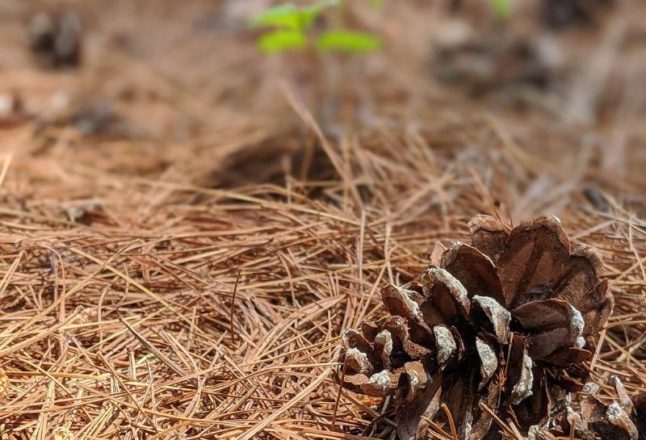
Mulch is excellent for retaining moisture and preventing weeds. But during a hurricane, the small pieces can become projectiles. Choose soft mulch, which still does an excellent job in your flower bed, but doesn’t become a problem when the wind starts howling.
The best mulches for hurricane-proofing your landscape include:
- Pine bark: Ground, chips, or nuggets
- Pine straws: Less likely to wash away.
- Fallen leaves: Rake and use the ones from your property.
- Melaleuca mulch: Long-lasting.
- Mixed hardwood: Made from scraped lumber, tree stems, and recycled palettes.
- Eucalyptus mulch: Affordable and comes from central and south Florida trees.
- Utility mulch: Chips made from tree trimmings and other plants cleaned from power lines.
- Cypress mulch: Long-lasting chips.
Clean Up Your Yard
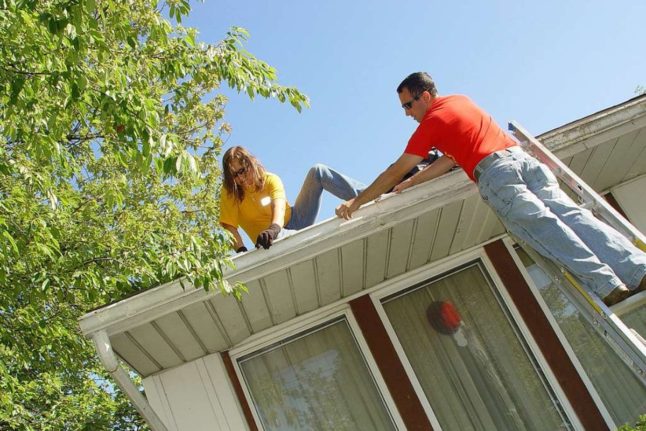
As you probably know, it’s best practice to keep your lawn and garden clean and free of debris. But there’s never enough time in the day and lawn care can fall by the wayside. But if you know a hurricane is on the way, there are a few things that you should take care of to reduce the risk of damage.
- Gutters: Your gutters are crucial for drainage, so if they’re clogged, you risk water damage to your roof, siding, and landscaping. Clogged gutters are also weighed down, making it easier for the wind to rip them off your house.
- Debris: Clear any debris from your lawn, including fallen branches, loose wood, rocks, etc.
- Put away loose items: pick up any things lying around, like garden tools, children’s toys, dog toys, etc.
- Tidy your emergency supplies: While it’s not part of your landscaping, homeowners need to prepare in case of an emergency. Clear exits, take inventory, and restock supplies like bandages, batteries, etc. Although the grocery store is likely a madhouse, make the trip if you’re low on essentials.
Bring in Valuables
Everything that you can’t tie down, bring inside, including:
- Lawn furniture (some people throw it in their pool)
- Trampolines (you’ll probably need to dismantle)
- Potted plants
- Grill
- Lawn ornaments
- Bird feeders
- Wind chimes
- Trash cans
Turn off Irrigation
Turn off your irrigation system. Your lawn won’t need the extra water and the sprinkler heads could be damaged if they pop up during a storm. Unplug the controller or shut down the power source to prevent power surges and lightning strike damage.
If you’re looking for irrigation tips, check out When to Water Your Lawn in Panama City.
Install a Hurricane Resistant Fence
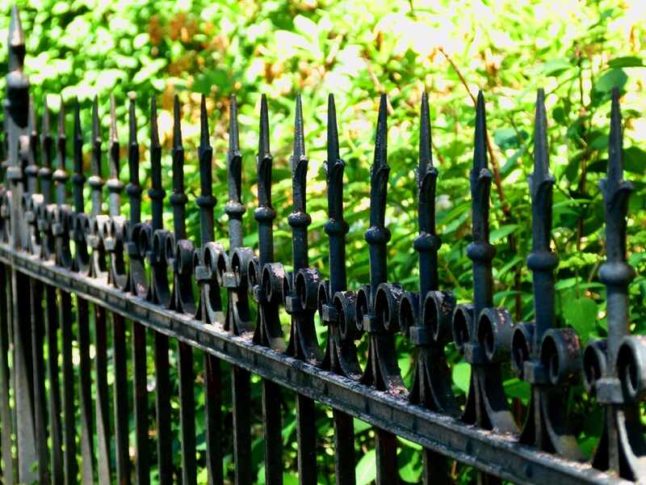
If you don’t already have one, install a wind-resistant fence. While solid fencing is great for privacy, high winds can blow it away. Fencing that allows wind to pass through has a much greater chance of standing after the storm passes.
Consider one of these wind-resistant fencing options:
- Chain Link
- Vinyl
- Metal
- Wood (as long as it’s a spaced style)
The best wind-resistant fence styles include:
- Picket
- Shadowbox
- Trellis/Lattice
- Louvered
How to Prevent Water Damage in My Landscape
Excess water can lead to water damage. Water damage can lead to worse water damage, rot, and health problems. Whether the water comes from a hurricane or a different source, a few strategies can help you mitigate the downfalls of excessive water on your landscaping.
- Grade: If your yard isn’t graded correctly, water will pool, creating fungal problems and water damage.
- Trenches: A trench around your flower bed, fence, or hardscaping helps water drain more easily.
- Clean your gutters and downspouts: Clean gutters allow water to go where it’s supposed to instead of pooling around your foundation. Check your downspouts to ensure it’s flowing correctly.
- Mulch: Use hurricane-resistant mulch to absorb the extra water.
- Install rain barrels: Because Panama City gets frequent heavy rains, rain barrels are a good idea. They typically go under downspouts to catch rainwater. The bonus is having access to water for your lawn or garden in times of low rainfall and drought.
- Add a retaining wall: Retaining walls control water flow and reduce erosion while looking beautiful.
- Use native plants and trees: Native plants and trees tolerate occasional flooding and help absorb excess water.
Once the hurricane season passes, you can get your lawn ready for winter. Check out 10 Winter Lawn Care Tips for Florida.
FAQ About Hurricane-Proof Landscaping in Panama City
How do hurricanes affect soil?
Hurricane winds and torrential rains erode soil.
What’s the worst hurricane to hit Panama City?
Hurricane Michael in 2018. Although Panama City has seen many hurricanes, hurricane Michael was the first Category 5 to hit the area. It caused 74 deaths and an estimated $25.1 billion in damages.
What’s the best hurricane-resistant turfgrass for Panama City?
St. Augustinegrass is your best choice for hurricane resistance in Panama City. It withstands Florida’s high heat, is salt tolerant, and withstands flooding conditions. It’s one of the best grass types in all of Florida. Another good option is Bermudagrass. It doesn’t fare quite as well with flooding, but it’s very hardy and resists diseases. Other grass varieties in Panama City may not fare as well.
Do I need a Professional to Hurricane-Proof my Landscaping?
Many of the tasks you need to do to hurricane-proof your home, you can do yourself. Although time-consuming and laborious, you can probably dig out flower beds, add mulch, and maintain your lawn.
But installing fences and building retaining walls may be out of your skill set. And even if you can do it, that doesn’t mean you want to do all that hard work.
With our lives so busy, it’s no surprise that homeowners in Panama City are turning to professionals. But finding a lawn company that’s affordable, reliable, and experienced is a nightmare. That’s where we can help. LawnStarter has researched and vetted tons of local professionals. We can connect you with the landscaping pro that’s right for you, your landscape, and your wallet.
Main Photo Credit: Adobe Stock